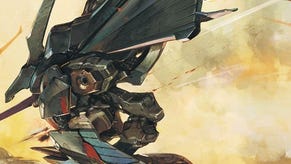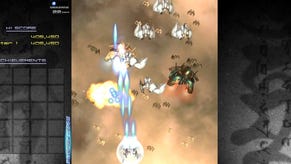Ikaruga
The hardest game you'll play all year.
There's barely a rarer game on the Dreamcast than Treasure's uber hardcore 2D vertical shooter Ikaruga, so Treasure fans can count themselves lucky that they don't have to get embroiled in eBay bidding wars to be able to play its latest twitch gaming masterpiece. For the benefit of the perennially ignored European gamer, Infogrames has picked up the rights to the functionally identical GameCube port - arguably the perfect game to demonstrate its rebirth under the Atari moniker.
But while Ikaruga may well be the modern day equivalent of all those old school arcade gaming experiences, it's a game that will frighten the life out of anyone not used to such unforgiving and exacting games.
2D? In the noughties? Pah!
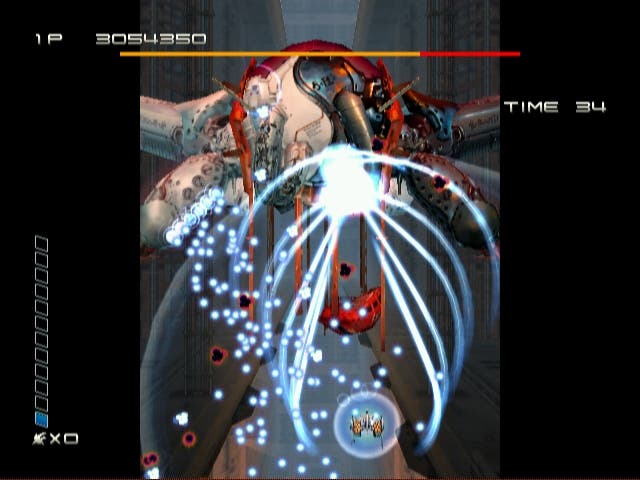
For a start the idea of playing yet another 2D shooter will have graphic snobs everywhere snorting with derision, while the almost vertical learning curve will have the 'save anywhere', and 'unlimited continues' generation blubbing at the outrageous difficulty level.
If you find the concept of playing through a small number of levels repeatedly a tiring, taxing one, then it's probably wise to move along at this point. Ikaruga is a true hardcore gamer's game, and only the strongest will survive. Make no mistake, this is rock hard, and you're going to have to be the gaming equivalent of the Pinball Wizard to get anywhere at all.
But, if you fancy a test of hand-eye co-ordination, there's barely a game that we've played in five years or more that comes close to matching the true twitch gaming thrills on offer here.
The black and white blasting show
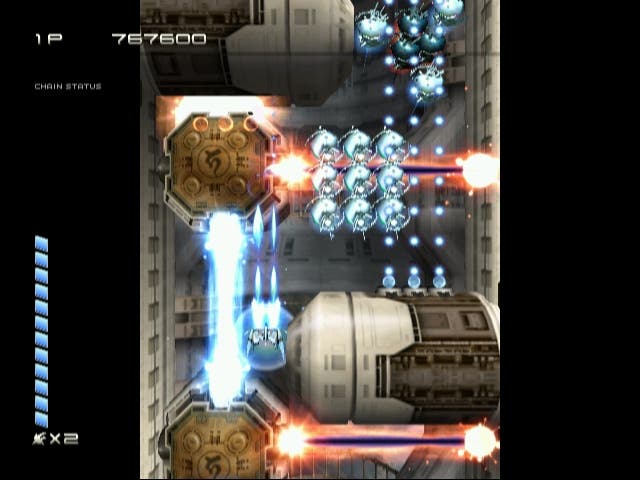
At its core, Treasure has somehow managed to devise a cunning gameplay concept that freshens up the whole blastathon. Basically, you can switch the polarity of your ship between black and white; if you're facing an enemy of the same colour you can absorb the energy of their bullets and activate up to a maximum of 12 homing lasers back at them, but the downside is that it takes longer to kill them.
However, switch to the opposite polarity and you can deal double the amount of damage, but run the risk of being destroyed instantly, in true shoot 'em up tradition. With the screen constantly awash with enemies and their projectiles, unless you're exceptionally talented, you'll be all out of ships in no time at all, and gasping at the immensity of the task ahead.
You can, mercifully, tweak the difficulty level (Easy, Medium, Hard), or bump up the number of ships available to you to a maximum of five, but in truth, thanks to the miserable number of continues you start off with, you'll be struggling to get any further than Chapter 3 unless you're prepared to firm those flaccid gameplay muscles back into life.
One... more... go... nuuuugh!
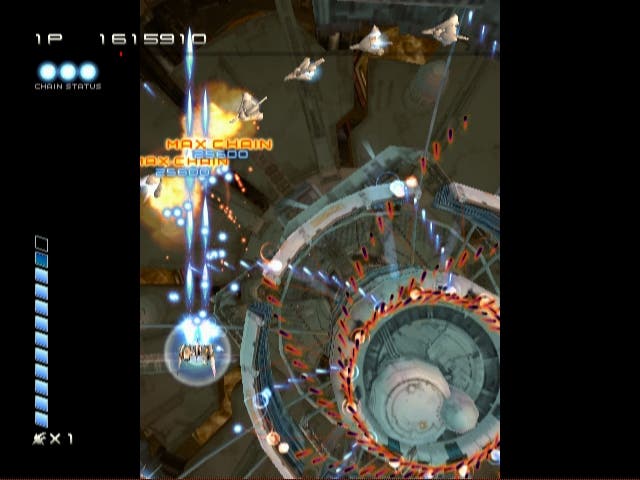
But get back into the groove of the 'try and try again' old school arcade mechanics, and necessarily repetitive gameplay, and you'll soon be dragged back for one more go by the same cable all good games of the past had you strung to. Persist, though, and you'll make minor advancements with every go, as you gradually devise more effective attack strategies, as well as memorising the layout of the more evil sections.
At first you'll maybe clear the first chapter without having to use up any of your credits, then the second, then eventually you'll be rewarded for each hour of gameplay time with an extra credit, or better still, unlock new advanced modes (for example when you reach 20 hours of play), such as the Prototype mode, that enables the real obsessive the chance to play Ikaruga to the design spec that existed early on in its development.
If you get really stuck, which is almost a given, you can always use the practice mode and work on particular sections that are giving you grief, with the added benefit of being able to play it slowed down if it's being a real pain in the butt. Beyond that, you can also view the pre-recorded demos of each level, which reveal how to conquer them - a major boon, and a means of stopping you from giving up altogether.
Two-player madness
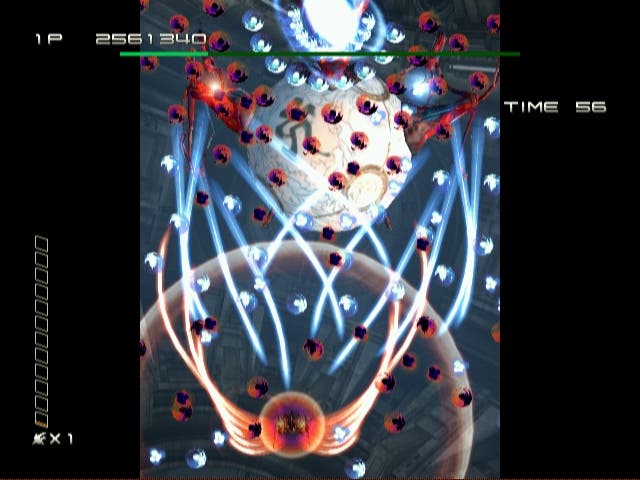
For added strategy, the game even sports a simultaneous two-player mode, which will no doubt prove a useful means of getting past certain overwhelming sections. Or just more confusing, depending on how good your mate is.
In terms of differences from the original, we're informed that it's basically identical. Graphically it's still the same pleasing mix of swooping, stunning 3D backdrops, epic explosions and a relentless assault of highly detailed ships, although you're going to have to find a means of displaying the game vertically to ever truly do the visuals justice. The controls needed a little reconfiguring before they worked to our satisfaction on the Cube, but in all other respects it's a faithful port.
One unique feature to the Cube version is the Net Ranking Board, which enables users to post high scores on the internet, via a code based system. Only when we bothered to enter ours did we realise quite how much we suck at Ikaruga. [You. Quite how much you suck at it. -Rob and Tom]
Can you handle it?
Despite our woolly ineptitude, we enjoyed Ikaruga a great deal, and with a serious investment of time we're almost convinced we'd get good at it eventually. The limited number of chapters (five) makes the task slightly less daunting, and with so few gaming alternatives out there, this is somewhat unique in the next-gen marketplace these days.
If you're an old school arcade veteran looking to prove yourself again, then this is perhaps the purest gameplay experience you'll find for a long time. Even if you're a rookie looking for something 'new', you can't go wrong, but you might well find the barriers to entry a little harsh to say the least. No one ever said it would be easy though, did they?


